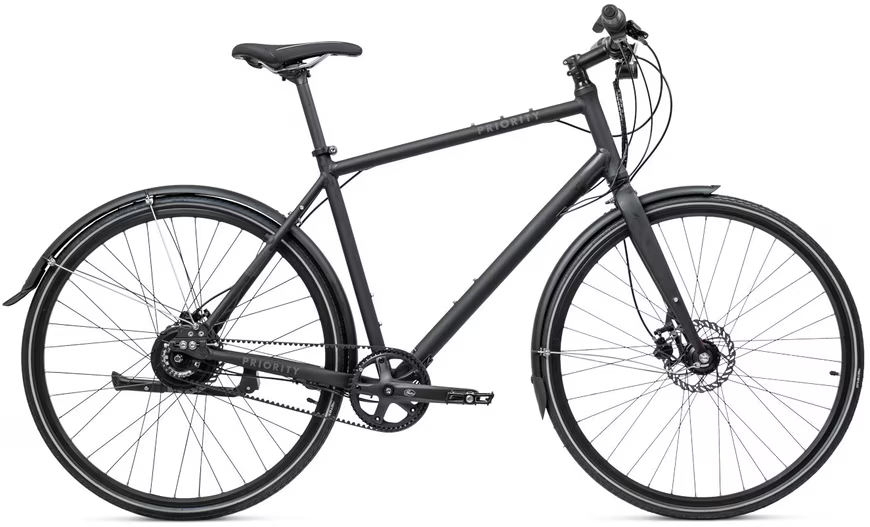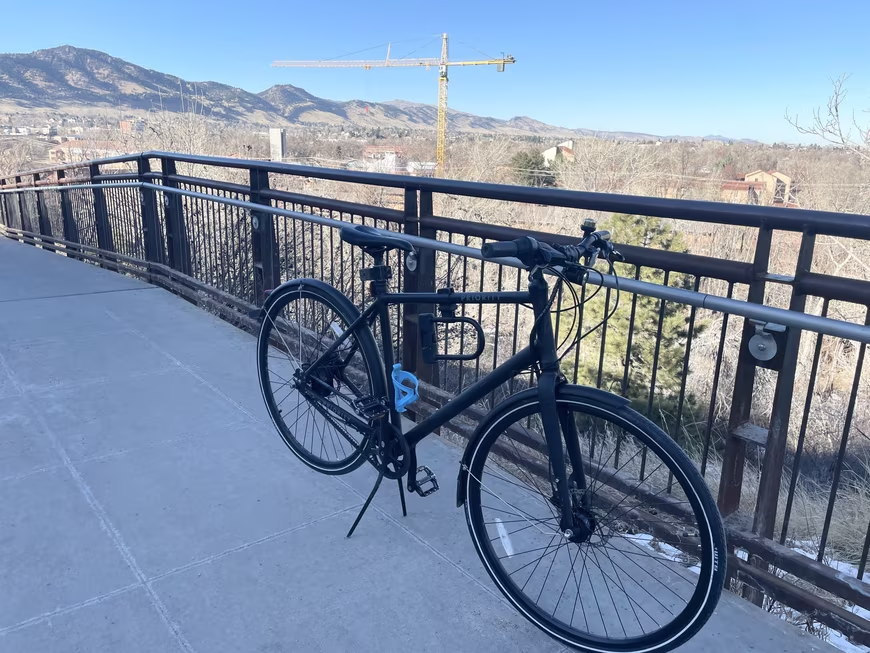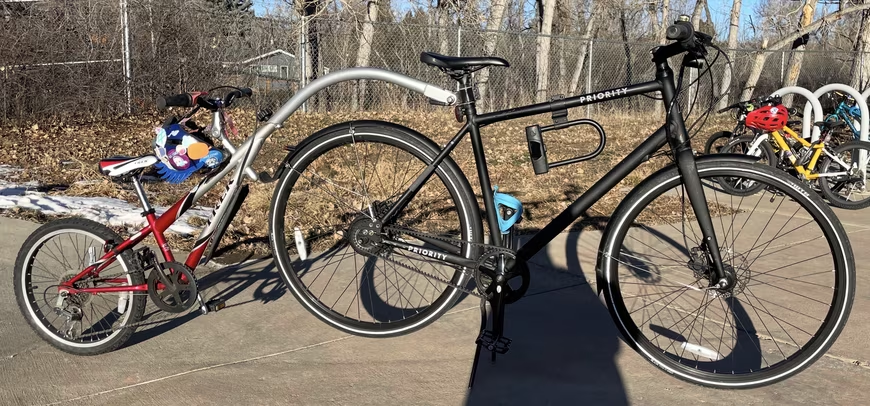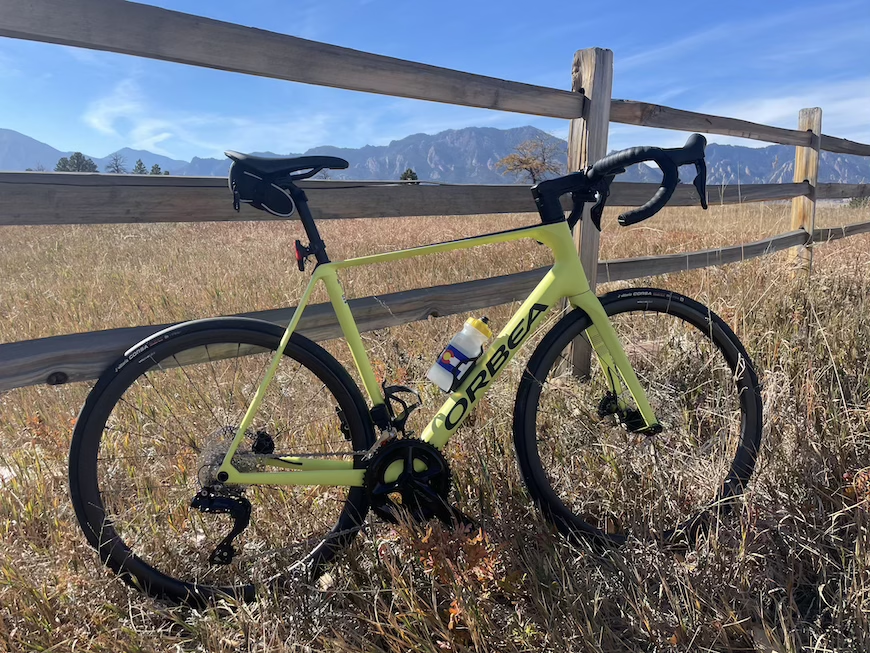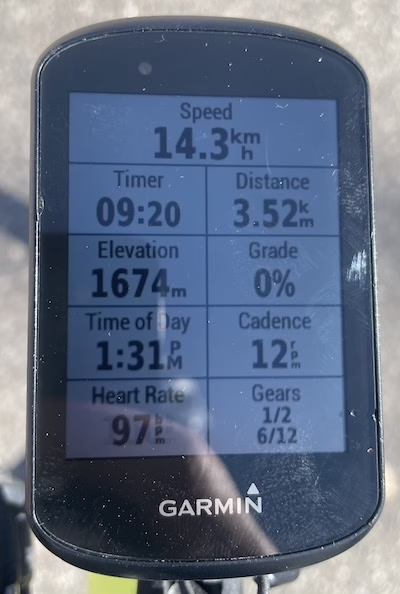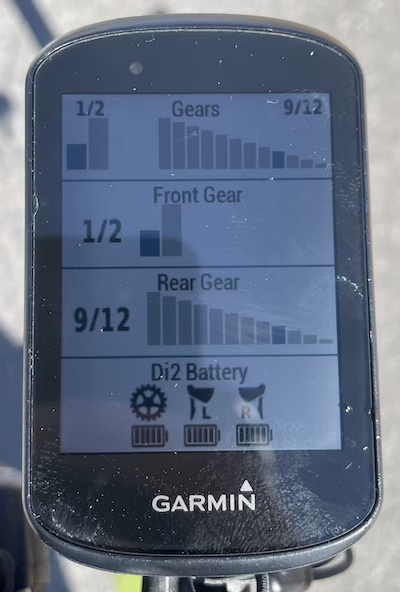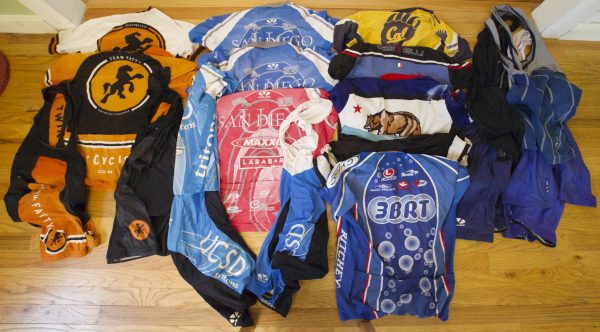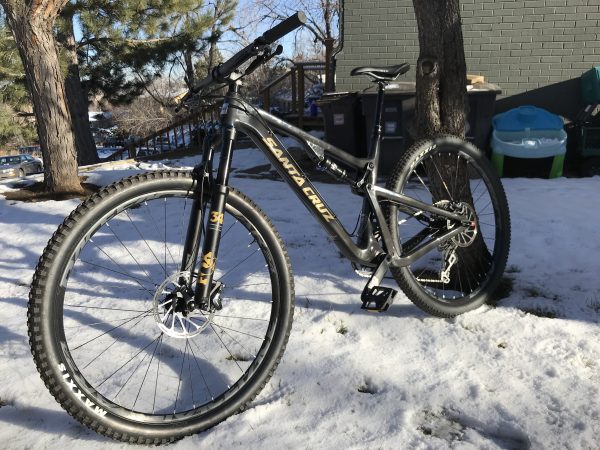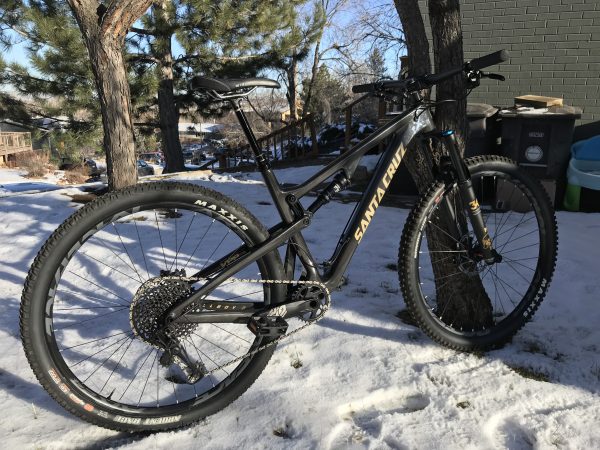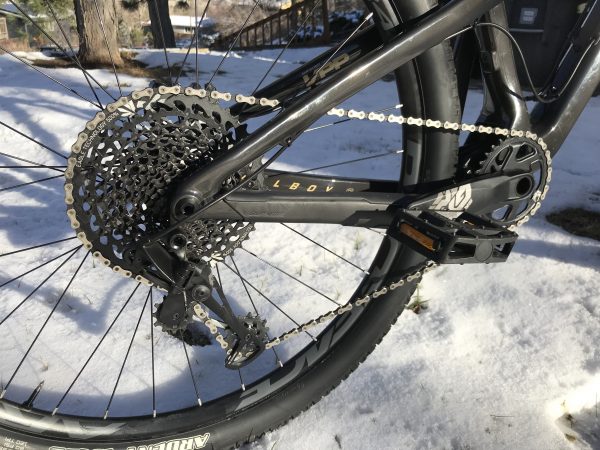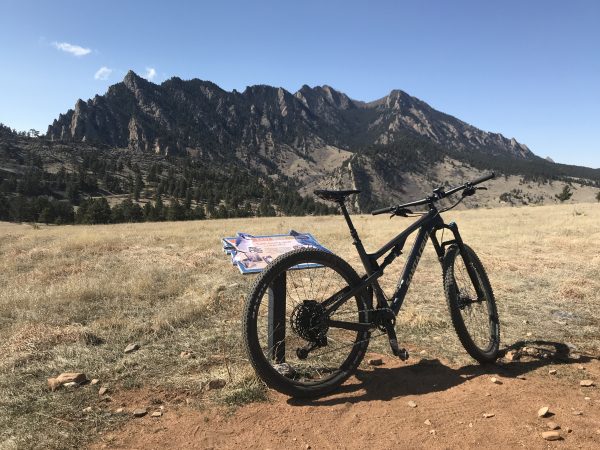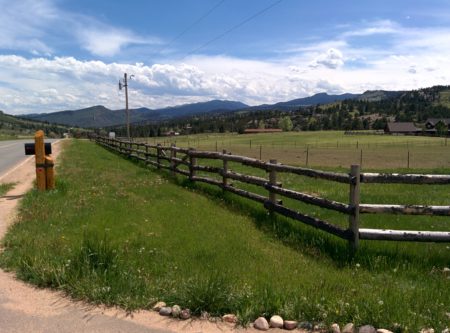A Ride In The Life
I used to do a photography project I called "A Day In The Life," where I would take photos all throughout a single day of what I did and where I went. Photos of everyday things like buildings, street scenes, people, and the like. I haven't done one in quite a long time, mostly because my days now include my children, and I don't want to plaster them all over the internet.
I ride with a GPS cyclocomputer that I've configured to record a lap every kilometer, which includes an alerting beep and a brief status screen that shows me how long I took to ride that kilometer. I started doing this when I lived in San Diego because there was a section of rolling road in Rancho Santa Fe that I would challenge myself to maintain 30 kph (or greater) on. Instead of doing mental arithmetic while hypoxic, the cyclocomputer did the math for me.
I decided to combine these two things into a "Ride In The Life," where I would take a photo of the road ahead of me every kilometer when my GPS beeped. Well, not every kilometer precisely, only when I felt safe to pull out my phone and take a picture. I didn't take any photos while descending at high speed, and if cars were passing me closely, I delayed the photo until I felt safe. The ride was one week ago and it was into the mountains west of Boulder; here is the GPS trace. I'm not sure how interesting this is, but since I went through the effort to take dozens of photos, I'm seeing it through to post them here. I hope you find them interesting!
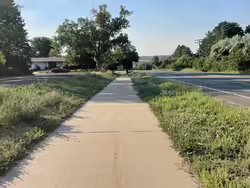
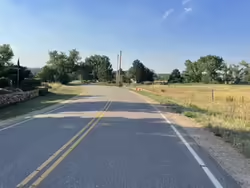
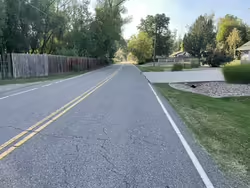
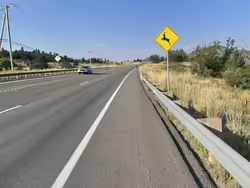
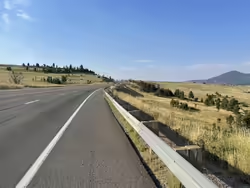
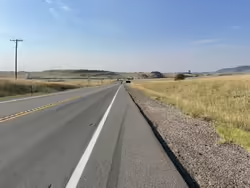
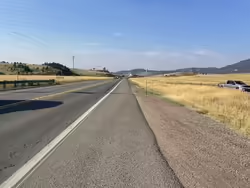
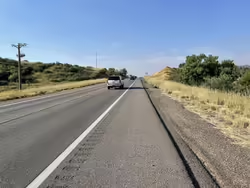
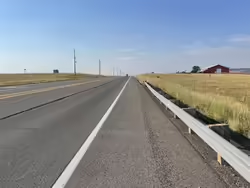
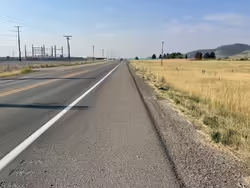
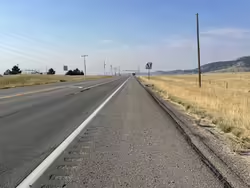
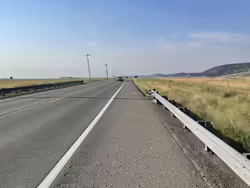
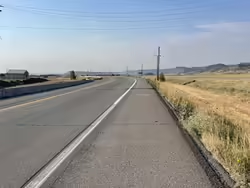
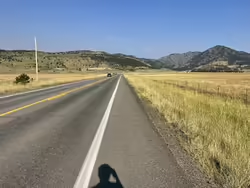
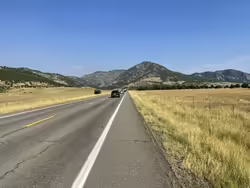
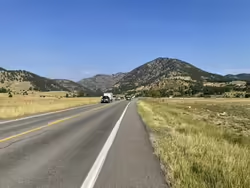
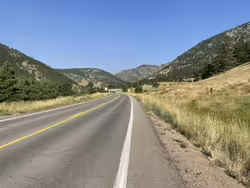
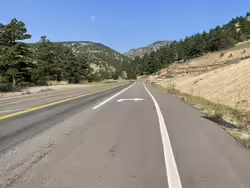
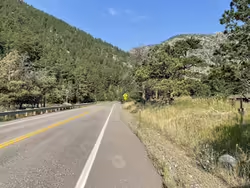
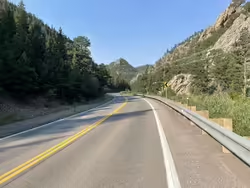
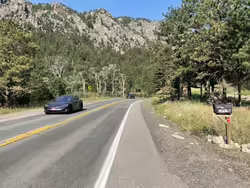
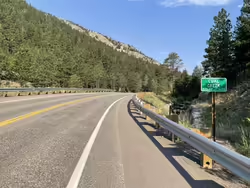
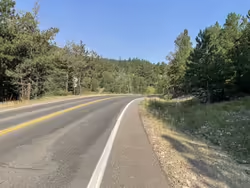
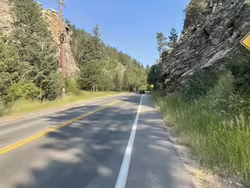
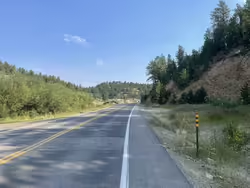
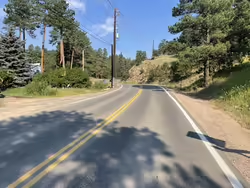
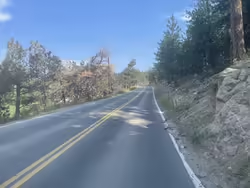
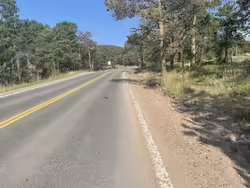
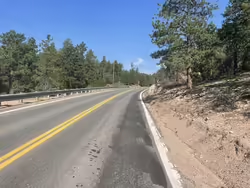
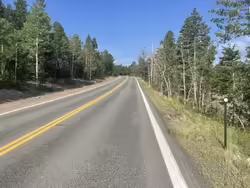
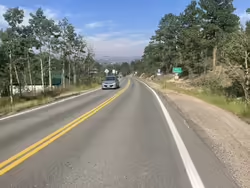
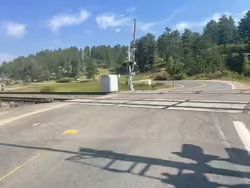
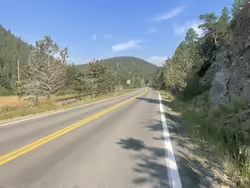
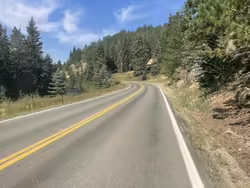
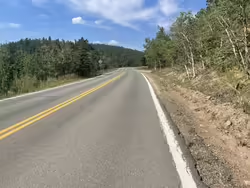
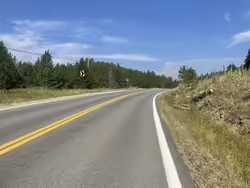
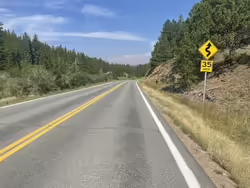
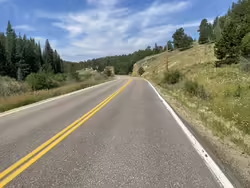
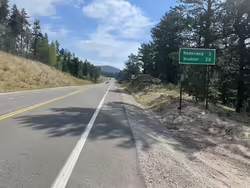
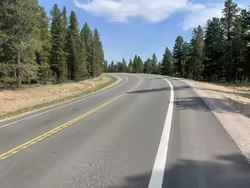
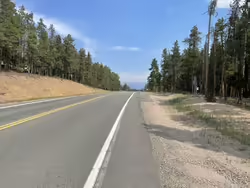
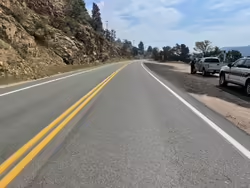
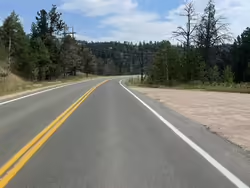
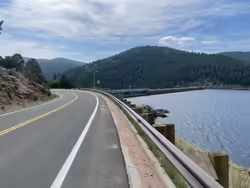
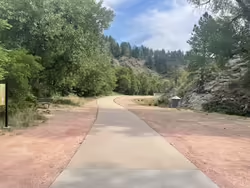
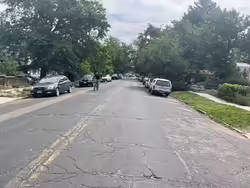
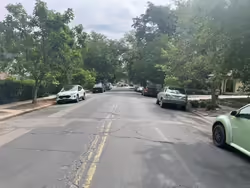
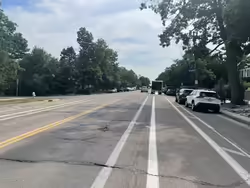
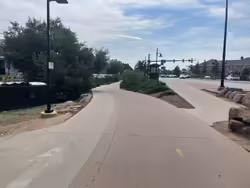
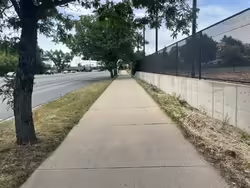
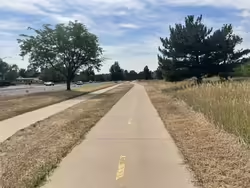
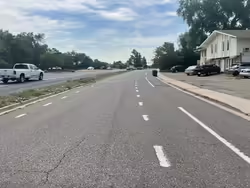
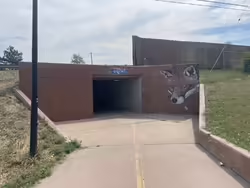 more ...
more ...
Updated Cycling History map
Some (many!) years ago I posted a few images showing my riding history in California (in 2008) and Colorado (in 2012). While they are interesting, these are static images and cannot be explored.
Thirteen years have passed and technology has improved. Today I added a new page showing my entire cycling history since I started using GPS over twenty years ago. Instead of separate static images, it uses dynamic web technology™️ on a single map. As before, color shows how frequently I ride past a point on the map. However, I changed the logic: my previous maps used counts of observations near points, my new map uses counts of distinct rides that pass each point on the map. Instead of where I've done the most laps or my GPS has recorded the most times (for whatever reason), this is more indicative of where I ride the most.
For the most immersive experience, here is the full screen version.
more ...Tour de France Pool 2025
Here is the 2025 page for the Tour Pool I've been a part of for 18 years. I'm on team Florky which are in second to last place as I write this. Which is pretty typical (so typical that this post from one year ago team Florky was also in second to last place!).
more ...Priority Commuter Bike
I realized that I've written here about my Santa Cruz MTB and my Orbea Road Bike, but that I never wrote about my commuter bike because I purchased it during the period when I stopped writing to this blog. Today I'll fix that omission!
In late summer 2020 I purchased a Priority Continuum Onyx to replace my Frankencommuter bike. My old commuter was a hodgepodge of parts: a Nashbar road bike frame (called the "Framé" and no longer available for purchase), along with various used bike parts I acquired over the years; mostly from when I upgraded parts on my bikes. It was fine for what it was but after using it for about ten years it was wearing out and I was ready for something nicer. There were aspects of the bike that could never be fixed. In particular, the inability to fit fenders to the frame led me to decide something else was needed.
After doing research I decided I wanted a belt drive bicycle. I was interested in belt drive bikes because all the positives (listed here) seem perfect for a commuter and the negatives unimportant, or at least less important than the positives. They are low-maintenance, long-lasting, and clean. There are negatives (listed here; more later), but even some of the negatives have positives. For example, it's impossible to shift gears on a belt drive using a standard derailleur. To have more than one gear requires an internal gearing system, often placed in the rear wheel hub. This makes the bike more complicated, heavier, and less efficient. However, because the gearing is internal, it's sealed away from rain and dirt and requires less maintenance, exactly what I want from a commuter bike.
Priority bicycles sells only belt drive models, and I settled on the Continuum Onyx. It had basically everything I wanted:
- Belt drive
- Continuously variable transmission (CVT) internal rear hub (more on this later)
- Fenders
- Built-in lights using a front-hub dynamo
- Hydraulic disc brakes
- Reflectors everywhere, including the tire sidewalls
- Upright seating with flat bars
- Forgiving 32C tires
- "Acoustic" a.k.a. non-electric. At home I have to carry my bikes up and down a flight of stairs and I didn't want a bike that weighed 50-60 pounds
About the only thing they omitted, and probably should include on a city commuter bike, is a bell. Like reflectors, bells are legally required in many jurisdictions (but never enforced, really). I have added a bell and it's useful.
The are definitely negatives to a belt-driven bicycle. The bike is fairly heavy, especially in the back (although I'm probably spoiled by my other quite light bikes). It's also clearly less efficient than a standard chain-driven bicycle. I am not as fast as I think I would be on a similar non-belt driven bicycle at a given level of effort. Many parts of the bike would be hard to fix on the go. However I only ride it in town, and worst case I'll leave it locked up somewhere and use my bus pass to get where I'm going and return for it later. Doing any kind of maintenance that requires removing the rear wheel is a decent hassle.
The CVT rear hub has its plusses and minuses. On the positive side, in contrast to a traditional derailleur, it doesn't require any fine adjustment. It uses a single grip shifter(*), meaning that the bike can reasonably be operated with one hand that can both shift and brake (e.g. you're carrying a pie in your other hand). Coming from typical bikes with set gear ratios the CVT is at first very weird, but being able to change the ratio by just a smidge is useful. The minuses come down to the same issues mentioned above: weight, efficiency, and difficulty of working with the rear wheel. In my opinion the plusses outweigh the minuses.
After four and half years of ownership, it has indeed been a very low-maintenance bicycle. Other than pumping up the tires once or twice a month:
- I recently replaced the brake pads (front and back) and bled the hydraulic brakes. I've done this before on my mountain bike, and once I figured out how to shimmy the bleed block into the brakes, it was actually easier than the Santa Cruz
- I can't remember the last flat tire, and I think I've had less than 5 flats overall
- The new (see below) kickstand spring mechanism gets gummed up with road grime and about twice a year needs to be cleaned out
I do have some minor to medium complaints about the bike that mostly consist of the items Priority saved a few bucks on:
- The factory-spec kickstand was flimsy and I had to replace it when it broke. I replaced it with a two leg kickstand (holy moley, how can someone write hundreds of words about a kickstand?) that is far stronger and better than the original one. The one I purchased is especially nice and I spent more than I could have, but the one Priority supplied was not very well made
- I'm on the third bottom bracket. For both previous the bearings holding the spindle went bad and the bottom bracket developed a very annoying click. It is likely that a higher quality bottom bracket would solve this issue
- The connector that links the dynamo hub to the wire that runs to the lights is cheap and needlessly difficult to reattach after removing the front wheel. It's probable that this connector is matched to the hub, and the dynamo hub is not manufactured by Priority, but it's annoying
- The provided pedals were plastic which I replaced with some metal ones I already had. Looking at flat pedals online, the cheapest metal pedals are only a few bucks more than the least expensive plastic ones. Surely this price difference is smaller when buying in bulk
- I have replaced the saddle. Saddles are a very personal choice and it's impossible for one saddle to work for everyone. No fault to Priority here
Overall I have been and am very satisfied with the bike. It has delivered on almost all of the promises of a belt-driven bicycle. If Priority & the dynamo manufacturer made the choice to spend a few more bucks (and really, just a few bucks!) in a few places, my complaints would be basically zero.
(*) I generally dislike grip shifters, but considering how the CVT works, I think this is an exception, and it's a good solution.
more ...My Cycling in 2024
2024 was a pretty good year for me in terms of cycling. Late in the year I purchased a new road bike which is only the third road bike I've ever owned (I bought my first racing road bike in 2001, a Trek 5200 in black with Rolf Wheels). But most of all I managed to increase the hours of cycling from 2023 by over 50%. For me, the enjoyment of cycling is proportional to the time I get to do it, so this increase has been great.
2024 was my twentieth year using a GPS to track my rides. In April 2005 I started with a Garmin Forerunner 301. Garmin had been making GPS receivers for years and this was an early athletics-focused device. Compared to modern devices it was imprecise and buggy (especially the heart rate monitor), but it was still very cool. I was a pioneer of "out front" bike mounts when I jury rigged the 301 to my handlebars. Not long after moving to Colorado in 2010 I upgraded to a Garmin Edge 705 that was bike-specific and had a host of upgrades, including maps, a cadence sensor, a color screen, and a barometric altimeter. A couple years ago I upgraded again to a Garmin Edge 530 which is even more accurate with the addition of GLONASS and Galileo compatibility.
I started using GPS in 2005 a full four years before Strava existed. A few years ago I took the time to upload my full history to Strava including activities that predate Strava. It's kind of fun looking at these old rides, I have historical KOMs all over San Diego. They have long been claimed by other riders, but because I was the only one using GPS back then I was the fastest!
Below I've compiled some statistics in bar chart form covering all my rides with GPS data since 2005. There are a few very clear trends:
- Through 2010 the activity trend is downwards as I sacrificed riding time in the interest of finishing my PhD (2005 is lower simply because I didn't get the Garmin until April)
- My peak year is 2011, my first full year after finishing my PhD and my second to last full childless year
- Totals continue to trend downwards with another child in 2016, and then only start to rebound in 2019 and ongoing as the children get older and require less attention
- 2018 was super rough; only 28 hours of recreational riding over the whole year
The bottom two graphs, the average speed (KPH) and rate of climbing (Meters/Kilometer), show some interesting things:
- All the years with better than 24KPH average speeds are years I think I preferred road cycling over mountain biking. For example, in 2019 I got a new mtb and I wanted to ride that all the time. Mountain biking is way slower than road biking and 2019 has the lowest average speed
- Correlated, I think all the years with more than 12 meters / kilometer of climbing are years I preferred mountain biking. Again, 2019 is an outlier because I did proportionally more mountain biking
- Years before 2010 are mostly in San Diego. It's hard to disentangle the fast speeds 2005-2007 between being younger, still racing, doing less elevation, and less mountain biking. San Diego is not flat, but it's harder to get the kind of elevation changes available along the Colorado front range
I have not included the distance I commute by bike in these plots because I can't be bothered to turn on GPS tracking when I commute. It's likely that each of the last few years, perhaps since 2019, I've commuted 500-1,000 KM by bike each year.
The plots below are interactive thanks to Plotly, a tool I highly recommend!
more ...New Road Bike
In late 2013 I built a road bike (not pictured) from individual parts. I built it using a 2012 Fuji Altamira frame and fork, 11 speed Campagnolo Chorus, and Mavic Wheels. It was a fun project to source all the parts and put it together. I have enjoyed riding this bike in the 11 years since I built it.
The bike has not been without issues. A few years ago the rear derailleur broke. What broke is not important to mention here, except that in the end my father in law was able to weld a fix, and I remain appreciative of that. The bigger problem is that very shortly after I built up my bike, Campagnolo made a small change to their 11 speed products that broke backwards compatibility. A replacement to my 11 speed rear derailleur was basically impossible to find, hence the need to fix the derailleur with welding. Since then, I've known that if anything broke again, I'd either have to buy a whole new component group, or a whole new bike. In a sense, I've been on borrowed time.
In the intervening decade since I built the bike, there have been a few major changes to road bikes:
- Rim brakes have been replaced with disc brakes. I think that disc brakes are wonderful on mountain bikes, I have them on my MTB. For road bikes I think they are less crucial. The stopping power of rim brakes is more than enough for road bikes. However, disc brakes on road bikes is the direction the market has gone, probably for better (on balance) than worse.
- Electronic shifting replaced the cable actuated shifting with batteries, wires (or radio signals), and servos. Instead of levers, the shifters on the handlebars are simply buttons and moving the derailleurs is handled by a computer. I have been manually shifting for over 35 years without too many problems, but I am also not a luddite and the precision and speed of electronics are hard to beat.
- Internal cable routing runs cables inside as much of the bike structure as possible. There are aerodynamic advantages to this, and it also prevents dirt from accumulating on the cables. It also makes installing and servicing the cables much, much harder. Personally, I like the look of a bike with internal cabling.
- Tire clearance has inflated (ha!) dramatically. My Fuji can only handle 25C tires, while many modern road bikes can handle 32C or higher. Partially enabled by disc brakes (because rim brakes struggle to reach around large tires), larger tires allow for lower tire pressures that make riding more comfortable.
- Tubless tires remove the tubes inside tires. This is similar to tires on cars, except that bike tires typically have liquid sealant inside. On a mountain bike the advantages of tubeless are many, not least of which they eliminate the possibility of pinch flats. I have tubeless tires on my mountain bike and I think that they are well worth the hassle. On road bikes the advantages are less clear. The tire sealant only works at lower pressures, around 40 PSI. This means that a tubeless tire inflated to 90 PSI that gets a small leak will simply hiss out sealant (spraying it everywhere) until around 40 PSI, at which point the sealant can do its job. But then the tire is at 40 PSI, and you're squishing along on a really soft tire that's better than a fully flat tire, but not by much.
In summary, there have been a number of changes to road bikes in the last decade, most of which my Fuji either couldn't take advantage of, or wasn't worth doing. I decided it was time to get a new bike that had some or all of the new technologies.
After thinking about it for many (many) months, looking at lots of options (there is a spreadsheet), in early August 2024 I ordered a custom painted Orbea Orca road bike from a local shop. I have always liked Orbea bikes, and Orbea custom painted bikes cost the same as off-the-shelf models. Many other manufacturers charge extra for custom painting. The three month wait is fine if you already have a bike. I've always wanted a yellow and black bike, and that's what I got. I even have my name on the bike!
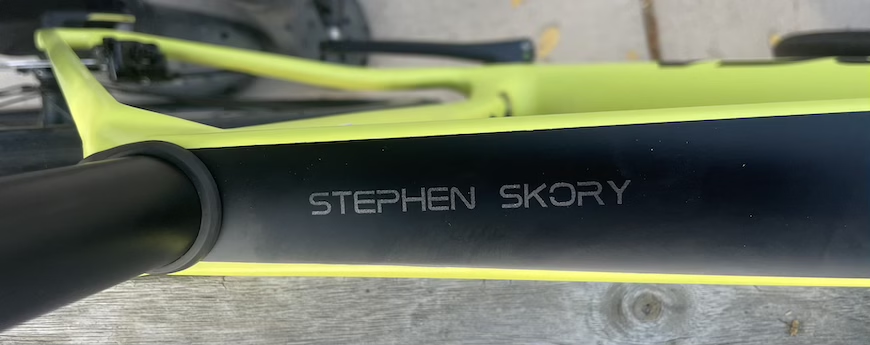
Of all the technologies mentioned above, the only one my bike doesn't have is tubeless tires. It is "tubeless capable," but I don't think I will do that. It has 12 speed Shimano Di2 electronic shifting with hydraulic disc brakes. The tires are 32C, quite a bit bigger than what I have on my Fuji.
The Shimano Di2 system is semi-wireless. Each shifter has a coin battery and communicates wirelessly with the derailleurs, and the derailleurs share a rechargeable battery that's stored in the seat tube. As shown below, the shifters can connect to my Garmin 530 and it can show what gear I'm in and the state of the batteries. Supposedly for average usage the derailleur battery lasts a few months, but having this view will be useful.
As I write this, I have only gone on one short ride to acquaint myself with the bike and adjust things. I think I will probably change the saddle and I may also change the seat post. I think the bike looks wonderful, it rides great, and I'm excited to ride it more. Of course, it's heading into winter here, and opportunities to ride will be less than in the summer. But that's okay, it will allow me to make sure it's set up the way I want in time for the spring and summer.
more ...Tour de France Pool 2024
Here is the 2024 page for the Tour Pool I've been a part of for 17 years. I'm on team Florky which are in second to last place as I write this. Which is pretty typical.
more ...Tour Pool 2020
As I have since 2007, I am scorekeeping a Tour de France fantasy team pool. Please click here to see how poorly my "Team Florky" is doing as the tour progresses.
more ...Purging The Old Cycling Clothes
Above is a collection of worn-out cycling shorts and jerseys that I am going to get rid of. All the shorts are worn out and uncomfortable. The jerseys have holes or are being held together with safety pins. Basically, I don't see myself wearing any of this ever again.
Judging by how long since I last purged my old cycling clothes, I will do this all over again in about 9 years.
more ...Tour de France Pool 2019
As I have since 2007, I am scorekeeping a Tour de France fantasy team pool. Please click here to see how poorly my "Team Florky" is doing as the tour progresses.
more ...My New MTB
Earlier this year I bought a 2018 Santa Cruz Tallboy C. This is my first full squish mountain bike, and it is awesome. The thing just floats over rocks and is much more forgiving than my old hard tail. It has 29" wheels, a 12 speed cogset, disc brakes, and a dropper post, all of which make the bike completely different from what I'm used to. Comparing times on Strava, I am faster on descents and any reasonably bumpy sections with this bike, which isn't exactly the point of getting a bike like this, but it is nice. There are trails I had stopped riding with my old hard tail because they were not fun that this bike makes fun. And that's the point.
more ...Tour de France 2018 Pool
As ever, please check this link to see how poorly my Tour de France pool team ("Team Florky") is doing. Maybe one of these days I'll actually try to put a team together that performs well.
But probably not.
more ...
